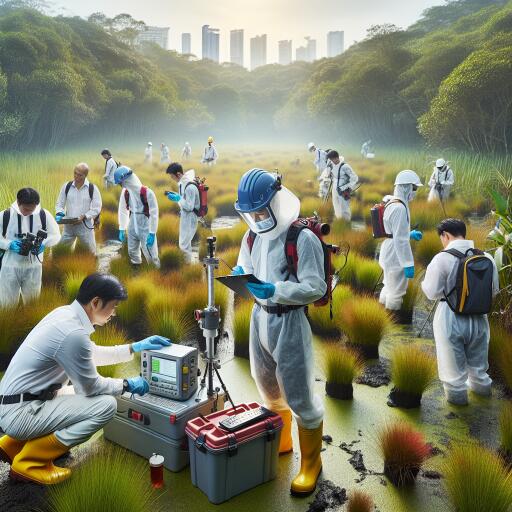
Singapore Researchers Develop New Method to Aid Peatland Restoration
In a groundbreaking initiative to combat climate change, a team from the Singapore-MIT Alliance for Research and Technology has devised a mathematical model aimed at preserving peatlands, critical ecosystems that serve as vast carbon stores and have been doing so since the era of the dinosaurs. Through the use of this model, scientists can accurately describe the three-dimensional shapes of peat bogs, enabling them to measure the carbon content within these ecosystems and identify priority areas for restoration efforts.
Peatlands are paramount in the fight against climate change due to their ability to store large amounts of carbon—acting as carbon sinks. However, these areas are increasingly threatened by human activities, which not only lead to a decrease in their carbon storage capacity but also make them susceptible to fires that contribute significantly to greenhouse gas emissions and regional air pollution. The model developed by researchers offers a new lens through which the shape and thus the carbon storage potential of peatlands can be assessed, providing an innovative tool for both the protection and restoration of these crucial ecosystems.
By employing aeroplane-mounted lasers to conduct detailed measurements across various global locations, including sites in Canada, USA, Finland, Estonia, Brunei Darussalam, and New Zealand, the study builds upon previous theoretical work that detailed the ecological and hydrological processes vital for peatland carbon accumulation. This collaborative effort underscores the significance of leveraging new technologies, like Light Detection and Ranging (LIDAR), to accurately map and evaluate peatland carbon stocks, contributing to more efficient restoration strategies.
The method facilitates the identification of intact versus damaged sections within a bog, guiding restoration efforts towards areas most in need. Crucially, the restoration of peatlands through rewetting—blocking drainage channels that allow water to escape—has been highlighted as a critical step in reducing greenhouse gas emissions and preventing fires. This procedure also supports biodiversity by recreating the natural, waterlogged conditions necessary for the survival of various plant and animal species unique to these environments.
Additionally, the research team has made significant strides in refining the precision of peatland surface measurements through satellite and International Space Station lasers. Combining these advancements with their groundbreaking model, researchers now possess an unprecedented ability to describe peatlands’ shapes and calculate their carbon stock globally, utilizing elevation data alone. This development not only facilitates a deeper understanding of peatlands on a global scale but also aids in the planning of natural climate solutions aimed at protecting these ecosystems.
The implications of this research extend beyond ecological benefits, potentially impacting compliance and voluntary carbon trading markets through novel research and commercial applications. The methodology enables the efficient and cost-effective planning of peatland rewetting projects, addressing the urgent need to halt emissions and fires caused by peatland drainage—a contributor to significant CO2 emissions and public health crises resulting from air pollution.
The study marks a milestone in understanding raised bogs’ morphology, solving a challenge that has perplexed peatland scientists for over a century. With peatlands being critical carbon reservoirs, this contribution is invaluable for global climate change mitigation efforts. Going forward, the team aims to apply their innovative method to tropical peatland regions, where data scarcity has previously hindered carbon stock assessments, supporting efforts to reduce emissions from degraded peatlands and furthering global climate goals.
As this research progresses, it holds the promise of enhancing the protection and restoration of peatlands worldwide, reinforcing their role in global carbon storage and offering new pathways for addressing the pressing challenges of climate change.





Leave a Reply